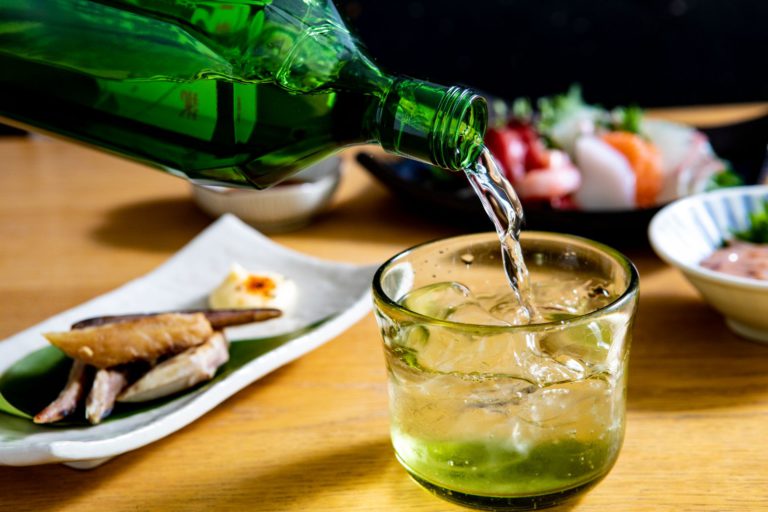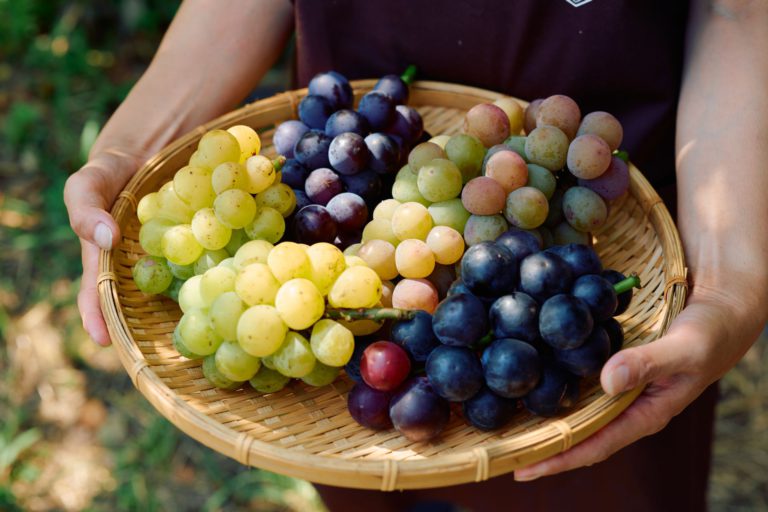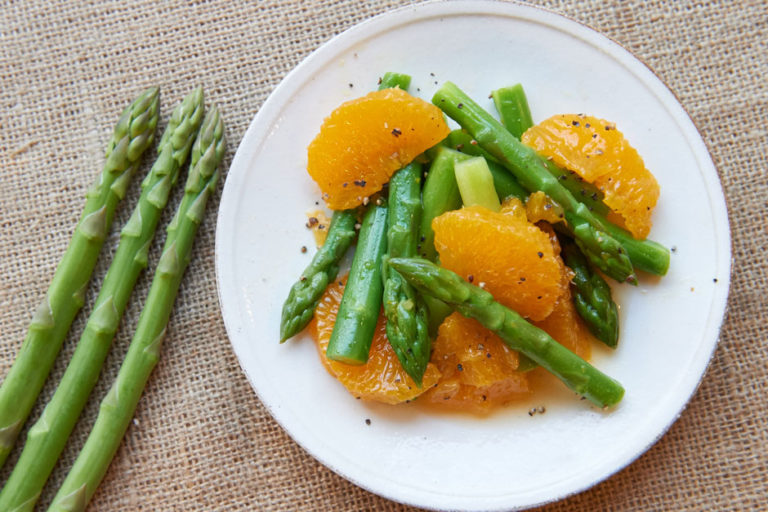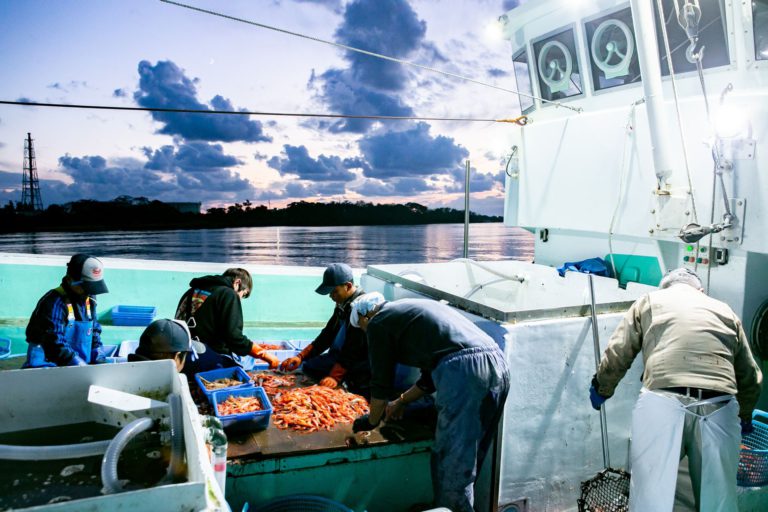Scallops Raised by the Wisdom of the Older Generation and the Northern Sea
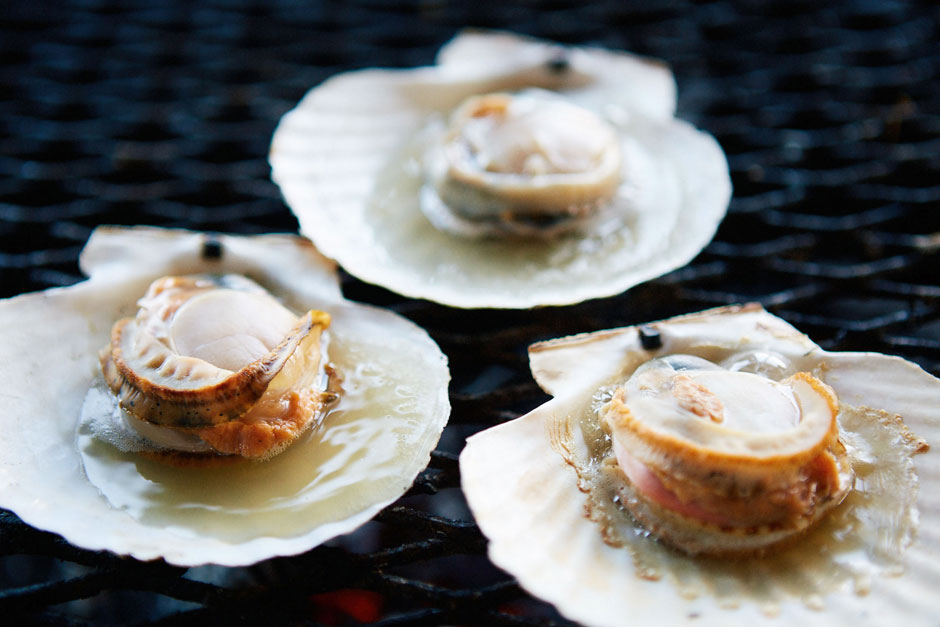
In wintertime, plankton on the drift ice that floats in the Sea of Okhotsk makes the sea rich in nutrients with which the scallops inhabiting the freezing cold water grow fat feeding on. That is why scallops grown in the Sea of Okhotsk are meaty, large and abundantly sweet. In recent years, exports of scallops to overseas have increased and are highly thought of around the world for their quality.
Grow and catch fishery style handed down in the region
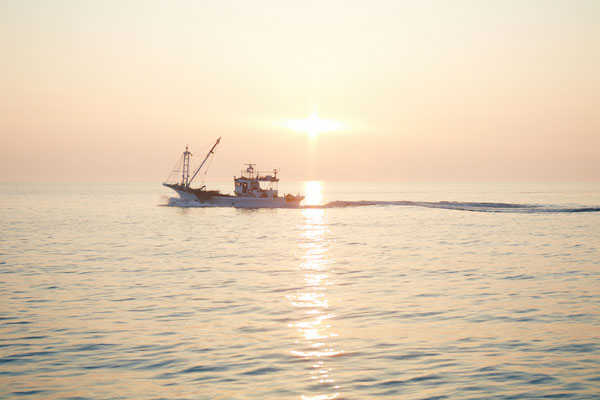
Two major methods are employed in scallop fisheries: the sowing and hanging culture methods. The sowing method involves stocking young shells and then harvesting them after they have grown; and the hanging culture method involves opening a hole in the ear area of young scallops and hanging them down in seawater to grow.
First, we went to Abashiri Fishing Port in northeastern Hokkaido to see a sowing fishery site.
Scallop harvesting begins soon after sunrise. The season lasts approximately five months, from June to the end of October. Mr. Toshio Isono, captain of the scallop boat, is an expert who has been working the sea since he was 15 years old.
Isono told us that “July and August are the busiest months. When the water temperature rises, scallop meat becomes sweeter and the scallop adductor muscle grows big, so scallops caught in August taste the best.”
Scallops grown using the sowing method develop in conditions very similar to the natural environment to produce firm meat.
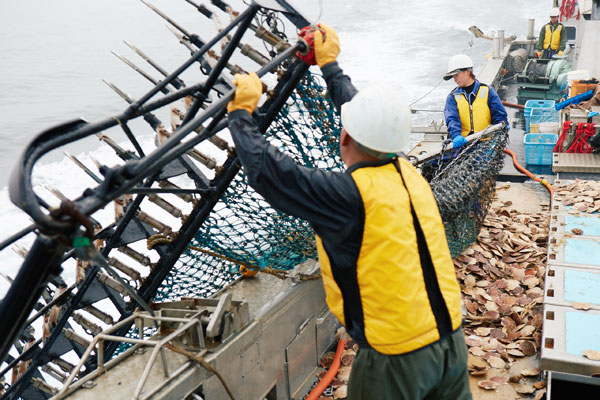
When arriving at the harvesting point, a net with a steel rake-like gadget called a hasshaku is cast to where Isono points. Hasshaku nets sink 60 to 70 meters down to the ocean floor. These nets are pulled in after the boat goes forward about 800 meters, and a large catch of scallops is harvested.
The fishermen on board sort out the mountain of scallops while traveling to the next point. Over the next three hours, the fishermen repeatedly cast and pull up the hasshaku nets. We were overwhelmed by fishermen working to catch scallops with their bodies covered in shells.
“Scallop harvesting is hard work. Only young fishermen can handle this work (laugh),” Isono laughed wildly.
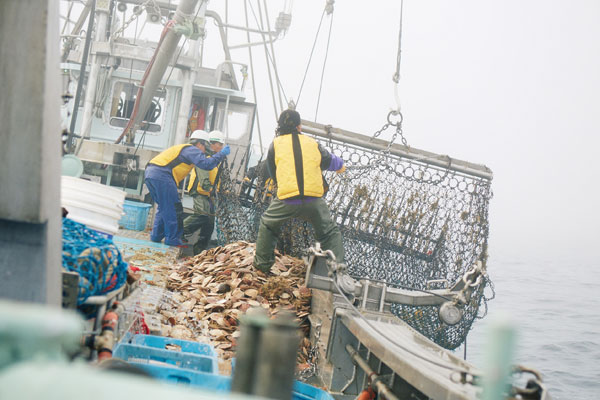
Here on the Sea of Okhotsk, the fishing style is “grow and catch.” Instead of depending completely on nature’s reproductive system, local citizens made an effort to pass down the resources of the Sea of Okhotsk to future generations.
Young scallops are nurtured in the ocean for four years. The beds where young scallops are stocked are divided into four blocks. Each year, mature scallops in one of the blocks are harvested, and then young scallops are stocked to create a four-year cycle.
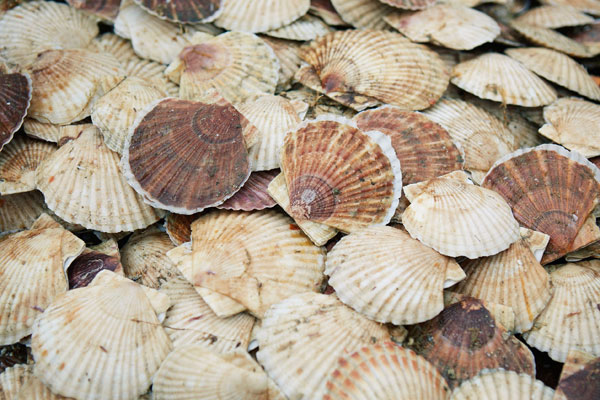
The volume of the daily catch is set. Because of this “grow and catch fishing style,” we are able to enjoy delicious scallops grown in the blessed Sea of Okhotsk whenever we want.
Tokoro is where the scallop aquaculture began
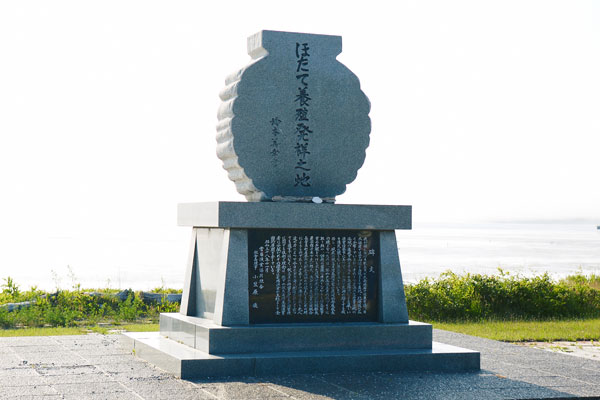
We then went to Tokoro, a town which faces the Sea of Okhotsk and Lake Saroma, and is known as the place where scallop aquaculture began.
Lake Saroma is huge, covering an area of 152 km2 and connected to the Sea of Okhotsk. The water is salty?similar to seawater. Here young scallops are grown hanging culture style and some are stocked in the Sea of Okhotsk.
A fisherman named Mr. Kudo, whom we met in town by chance, showed us the aquaculture facility at Lake Saroma. We saw ropes floating on the surface with many net pockets hanging down. In the pockets were young scallops measuring about five centimeters in diameter.

Mr. Kudo picked up two-year-old scallops, wildly cracked them open and handed them to us to taste. We ate scallops that were so big that it was hard to believe that they were only two years old. Well-balanced rich sweetness and just enough salty flavor from ocean water spread inside our mouths. Mr. Kudo mentioned that cultured scallops do not have sand inside them, which damages their shells, and grow to be beautifully shaped scallops.
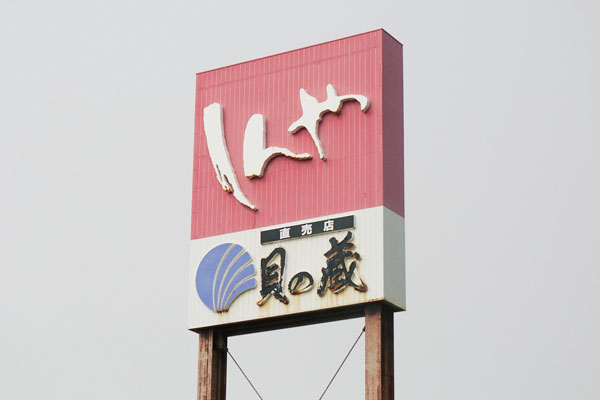
The man who contributed to establishing this scallop aquaculture that continues in Tokoro is Mr. Hiroji Shinya, the second generation president of Hotateya Shinya, which was established in 1891.
In 1933, Shinya was also president of the Tokoro Fishermen’s Cooperation and wished for reliable production of scallop in Tokoro. He worked together with the Fisheries Agency’s Hokkaido Experiment Station on a scallop aquaculture project at Lake Saroma.
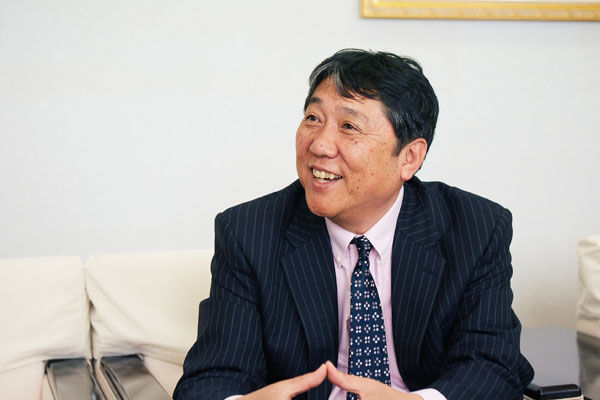
Mr. Yuuki Shinya, the current president of Hotateya Shinya, told us about the history.
“I hear that the most difficult part of the project was to come up with technology that would enable scallops to survive the winter. The process of trial and error continued until a method that would allow scallops to withstand the stringent natural environment of Okhotsk was finally discovered in 1975. It took approximately 40 years to establish this scallop aquaculture. Many difficulties were overcome and this aquaculture method originating in Tokoro spread throughout Hokkaido and to other regions. Tokoro is now called the town where scallop aquaculture began, and this was due to the wisdom and efforts of our predecessors.”
With the establishment of scallop aquaculture and ensured reliable scallop production, Hiroji Shinya then began developing a way to make scallops delicious. His efforts resulted in a Hotateya Shinya product called Hotate Kunyuzuke.
Blessings from the ocean with the aroma of the forest
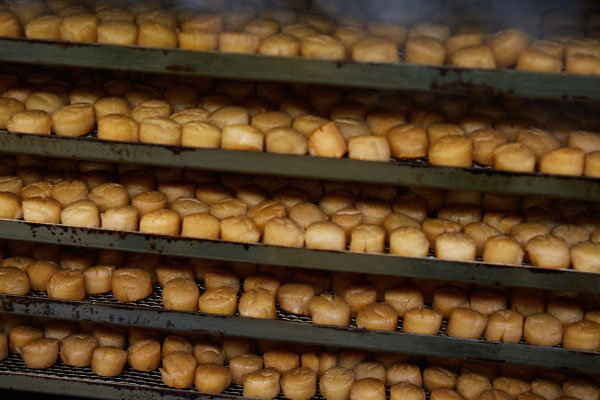
At a time when technologies for refrigeration and processing were underdeveloped, the only way to preserve scallops for a long time was to make it as dried adductor. A new way to preserve scallops was to smoke and marinate them in oil. Since its development in 1961, Hotate Kunyuzuke is a popular product linked to the name Hotateya Shinya.
Scallops used for Hotate Kunyuzuke are grown in Lake Saroma. Shinya says that scallops grown with the aquaculture method are perfect for smoking and marinating because sand and foreign particles do not mix together.
The key to Hotate Kunyuzuke is the smoking process. Salt boiled scallops are slowly smoked over oak chips, whose mild aroma does not spoil the flavor. The smoked scallops that turn a golden color are then marinated in cooking oil overnight after which the process is completed.
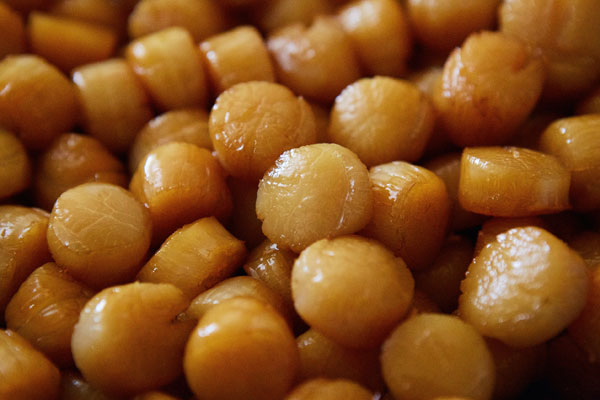
When I tasted it, the aroma of smoke added richness to the flavor; and as I chewed it, the delicious flavor gradually filled my mouth. Because the scallops are made using a simple recipe, I could taste the good quality of the ingredients directly. The love for scallops of the previous generation is in every scallop, which makes it tastes even better.
“Recently, this product has become popular among tourists from overseas, who purchase it at the airport. I am so happy that people overseas are enjoying scallops from Tokoro,” says President Shinya.
The Sea of Okhotsk boasts the highest scallop catch in Japan. Today, these delicious scallops are valued not only in Japan but by people overseas.
The foundation of the “grow and catch” fishery for scallops from the Sea of Okhotsk that we take great pride in throughout the world came about from the efforts of the older generation, whose hope was to pass our resources down to future generations and deliver the delicious flavor of the blessings of the Sea of Okhotsk.

